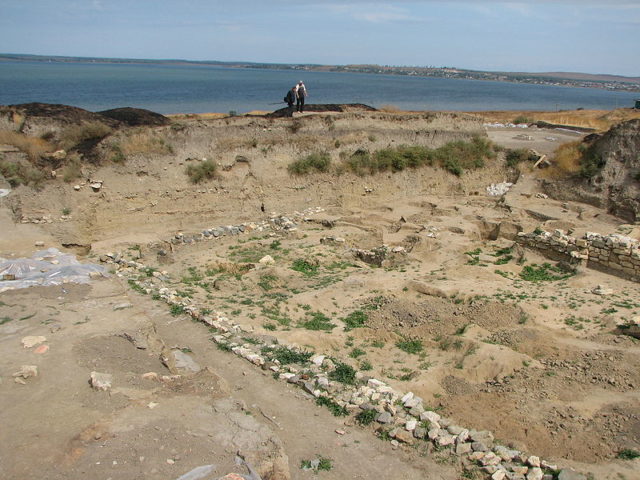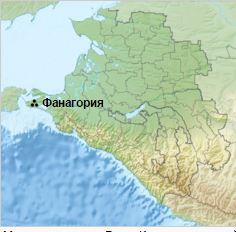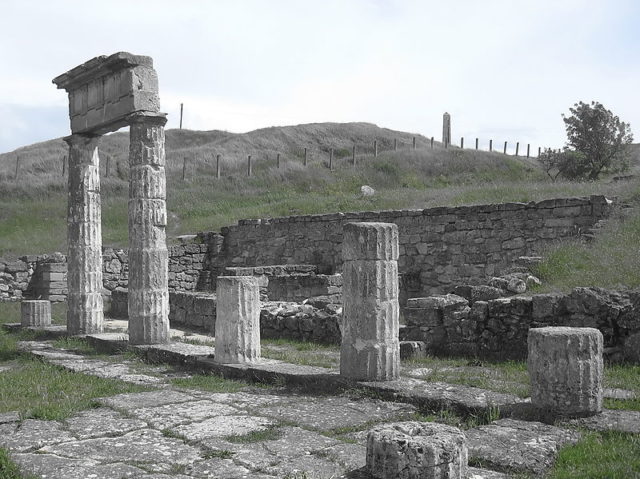Archaeologists under the auspices of the Oleg Deripaska Volnoe Delo Foundation, as well as the Russian College of Science’s Institute of Archaeology, have found remains of a marble stele (A kind of monument) that includes an engraving of the early Persian King Darius I. It was discovered among the remnants of the ancient settlement of Phanagoria, an ancient Greek metropolis near Crimea, in the Krasnodar District of Southern Russia. The stele was dated to the first half of 5th century BC. The deciphered engraving was in early Persian, and state that it was created during the reign of the Persian King Darius I, who lived from 550-486 B.C. The writing, mostly undecipherable, can to some extent be interpreted as mentioning the early city of Miletus, one of the largest cities in Ionia, a province later known as Asia Minor. Miletus led a rebellion of Greek cities against Darius I. It was suppressed in 494 B.C.

Archaeologists suggest the King erected the marble stele in the city to commemorate his conquest against the Greeks. Later on, suggested the archaeologists, a part of the inverted and fractured stele appeared in Phanagoria, possibly as the ballast on a vessel that came into the Phanagoria harbor, as at hand there is no stone of that kind on the Taman peninsula. The stele is presently being inspected at the renovation research laboratory of the Phanagoria Investigation and National Center.

After the discovery of the stele, researchers found the remnants of early stronghold walls in the acropolis. Amid the latest findings made at Phanagoria are remnants of a fortress of Mithradates VI, which dates back to the 1st century BC, and an early nautical ram used by the military of Mithradates VI, and a tomb with a stepped ceiling, the oldest temple excavated on Russian terrain, dating back to the 5th century B.C. Also uncovered were a number of submerged items, such as the early city’s streets, now covered with sand, ship debris, and port structures.
The excavations cover the 2,500-square-meter acropolis at the center of the antique city, the eastern necropolis, an early graveyard, and a sunken portion of the city. What makes the site exceptional is the combination of so many specialists working together; besides historians and archaeologists, there are anthropologists, paleozoologists, numismatists, earth scientists, and other scholars. The intricate study of Phanagoria has shed new light on the occupants’ means of existing, spiritual principles, economic situation, as well as their parts in military clashes.
Settled in the mid-sixth period BC by Greek settlers, Phanagoria was the capital of the Bosporan Kingdom, an ancient state situated in eastern Crimea and the Taman Peninsula. Phanagoria was the main financial and social center of the Black Sea area, one of the largest Greek metropolises, the initial capital of the Great Bulgaria, and one of the key cities of Khazar Kaganate. It was also an early center of Christianity. Saint Andrew was thought to have spoken in Phanagoria. The city boasts the largest Jewish population in the Black Sea region, and the first Russian synagogue was constructed in Phanagoria in the 16th period CE.

In the 9-10th centuries, the inhabitants abandoned the city for reasons still unknown. Phanagoria is surrounded by Russia’s biggest necropolis, covering a region of over 300 hectares. The layer of soil being examined is up to seven meters deep and has a total volume of 2.5 million cubic meters. No single structure has been built in the city since early times, which has helped preserve the remains and the ancient objects. The Volnoe Delo Foundation, one of Russia’s major privately-held donations organizations, is led by entrepreneur and industrialist Oleg Deripaska. It has funded investigation events in the 2550-year-old city of Phanagoria since 2004. The Foundation has donated over $10 million to the exploration of Phanagoria over the previous 12 years. Now, Phanagoria is one of the largest and most advanced archaeological sites in Russia; with its own scientific and cultural center, hi-tech gear for above ground and underwater research, and a varied team of experts involved in the research.
